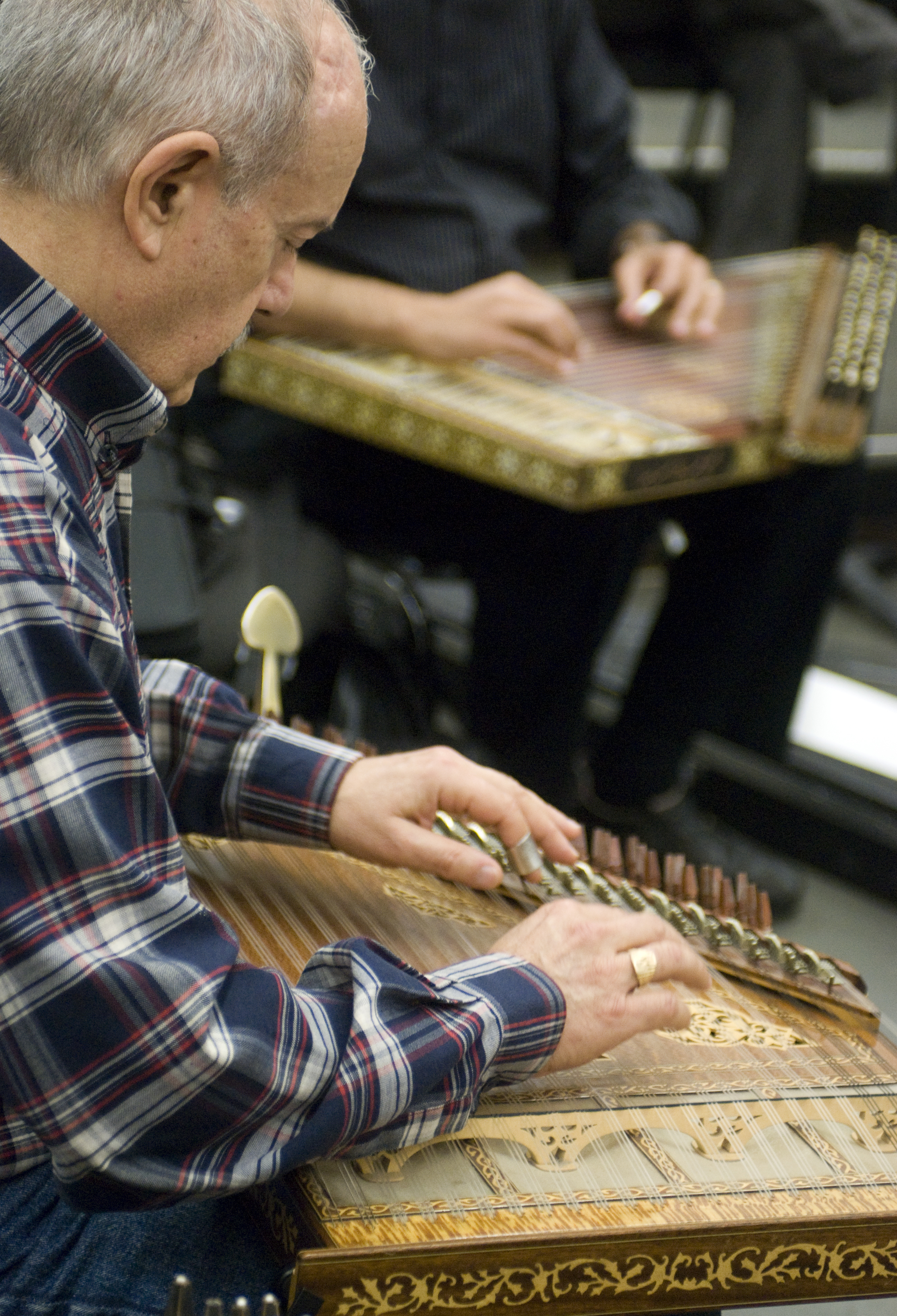The music of UCLA’s Near East Ensemble is filled with emotion and mysticism. For 30 years, Professor A.J. Racy, a world-renowned musician, has been teaching the performance group how to stay true to the sounds of the region.
The Near East Ensemble centers around the music of Arab countries and Turkey and plays urban music. The music sounds different because it doesn’t use chords or harmonies, instead focusing on embellishment and improvisation (similar to jazz) and using modes and microtones that don’t appear in a standard musical scale.
“The music becomes an art of melody, in a sense that melody’s complex,” Racy said.
The ensemble is formed by those taking the class Ethnomusicology 91N and consists of around 15 people. The group performs a few times throughout the year, leading up to the ethnomusicology spring concert series, where it showcases its work.
The ensemble uses a few well-known instruments (namely the violin and cello), but the students also learn to play the ‘ud, nay, qanun and riqq.
Racy said he feels that the special appeal and reward from this kind of music lies in its emotion.
“Emotion is very important,” Racy said. “The music is intended to transform people emotionally.”
Near Eastern music’s goal is to create tarab ““ musical ecstasy ““ and to be an inspirational experience for musicians and audience alike.
